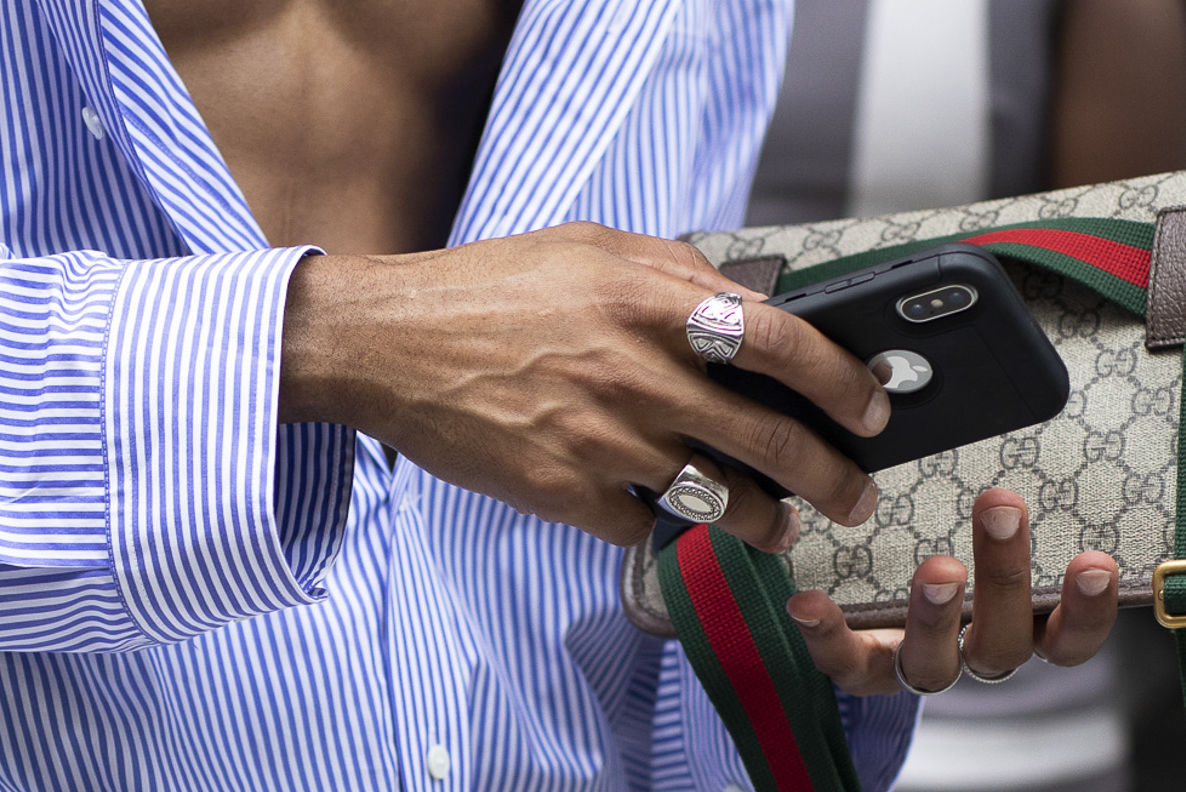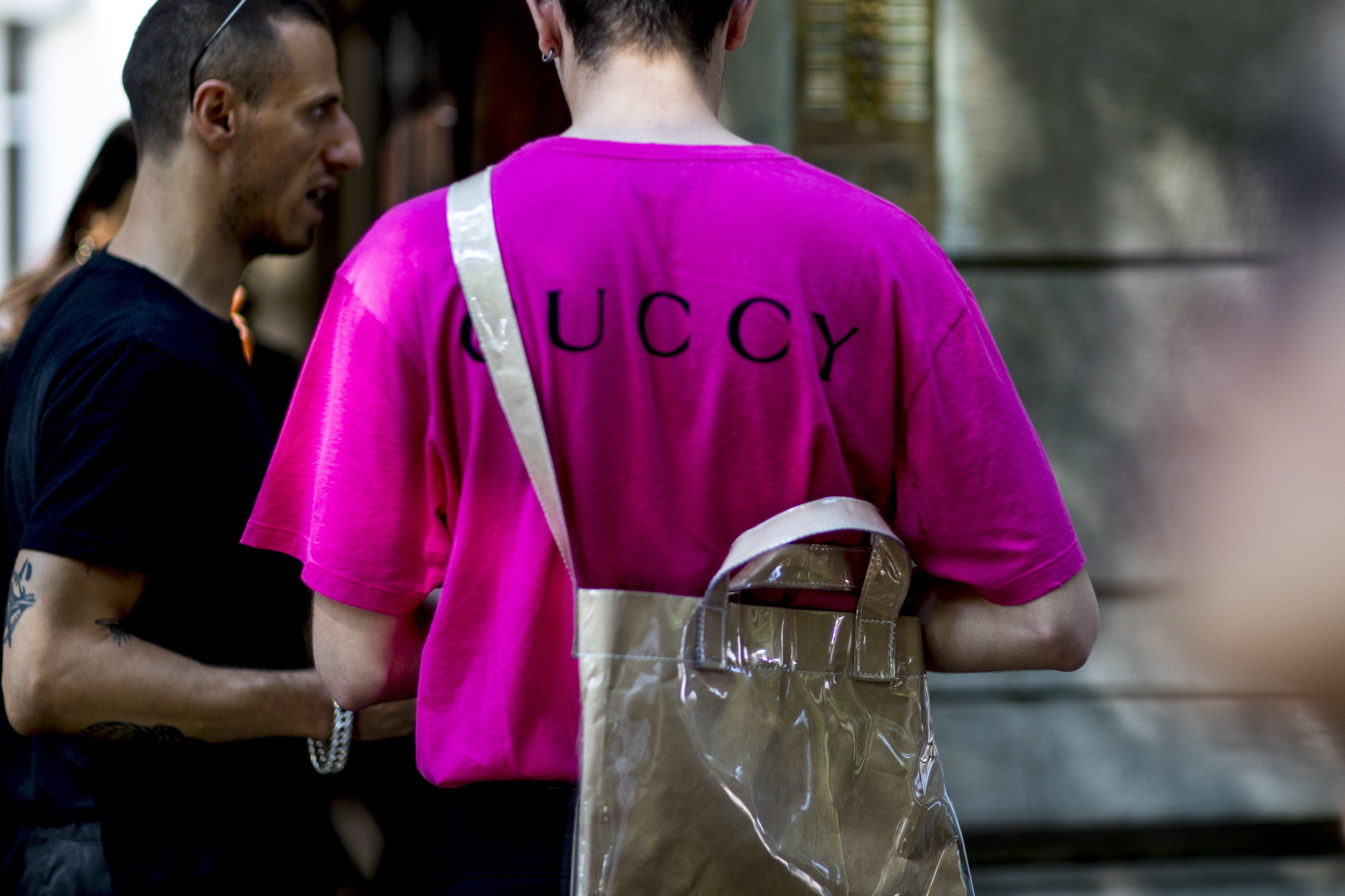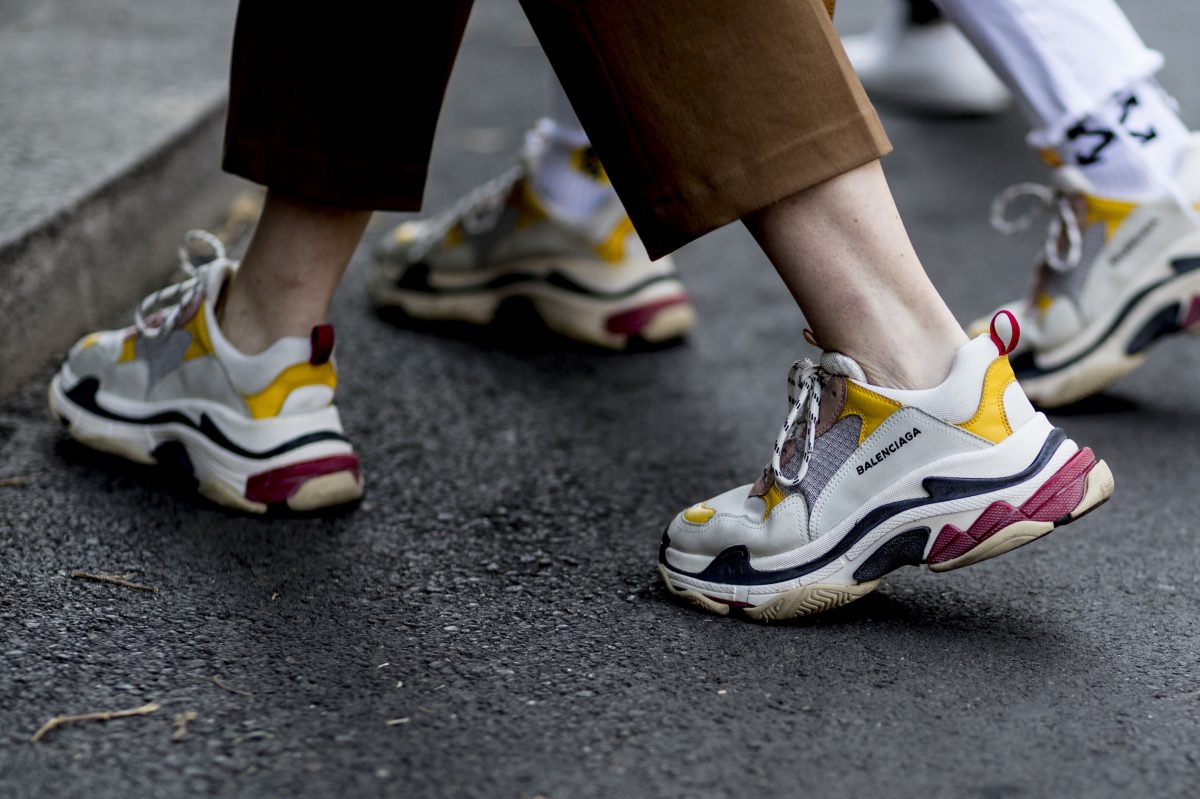With the menswear luxury market currently thriving in an otherwise struggling retail landscape, we take a look at the data to identify what’s driving the growth.
WGSN Instock data shows that new-in products across the luxury menswear sector have grown 14.0% YOY as the market is increasingly influenced by a more casualised streetwear aesthetic, thanks to a more informed menswear consumer who are now beginning to dictate the market from the streets and social feeds. Reinforced by streetwear influenced appointments such as Virgil Abloh at Louis Vuitton, showing that the streetwear influence isn’t a short-term trend but rather an industry shift.
Luxury sports shoes threaten the sports shoe market

Whilst new-in luxury bags rose 18.0% YOY, it’s the influx of the luxury sports shoe that is the real vehicle for the market’s growth. We’ve seen a 30.2% YOY increase in men’s luxury sports shoes, partnered with a 25.7% increase in out-of-stocks YOY. These figures reinforce the magnitude of the luxury sports shoe in the industry today, buoyed by the infamous chunky trainer as seen at Balenciaga.
Stemming from an evolution of the normcore trend of recent years, and the consistent ‘newstalgic’ references to archival sports styles, these exaggerated silhouettes utilise all the elements of minimalist design in abundance to achieve a maximalist aesthetic.
Whilst sports shoes continue to thrive in the luxury sector space, it is also worth noting the saturation of sports shoes in the mass market. As native sports brands lose their traditional territory to those who weren’t necessarily seen as a serious threat before – when it comes to delivering a sports aesthetic vs performance. Luxury brands may demand higher price points but deliver exclusivity and status that ventures further than owning a product.
Accessible Accessories lift the luxury segment

Accessories have long been the products to sustain the luxury fashion houses and the affordability grants the younger, yet more influential consumer accessibility to aspirational brands; a winning formula when it is the Gen Z and Millennial consumer who are both the instigators and sustainers of the streetwear influence.
The trend is only further set to spread as the aesthetic becomes more familiar to later adopters and the menswear market continues to embrace experimental styling.
Building hype is crucial for demand

Whilst a consumer desire for experience over product poses one of the biggest threats to retail right now, streetwear enables luxury to defy this. Product drops themselves become events and Facebook groups and Instagram accounts build online communities that create a sense of belonging and status (two key purchase drivers for the younger shopper). These groups generate an un-paralleled hype around brands and styles, forming a culture. All of which are centred on one thing – the product.
Find out more about WGSN Analytics Division, helping fashion businesses optimise trading in a digital-first competitive landscape by combining data analytics and specialist fashion insight.
Know what’s next. Become a WGSN member today to benefit from our daily trend intelligence, retail analytics, consumer insights and bespoke consultancy services.

